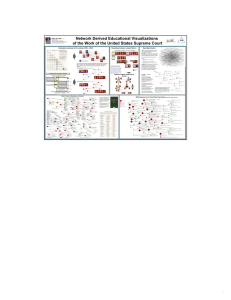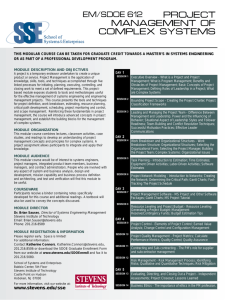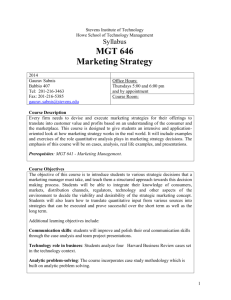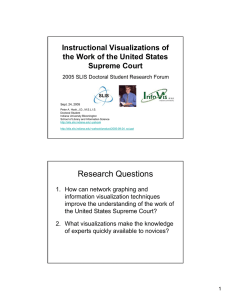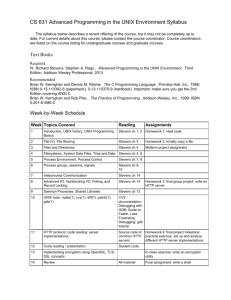Instructional Visualizations of the Work of the United States Supreme... Peter A. Hook,
advertisement
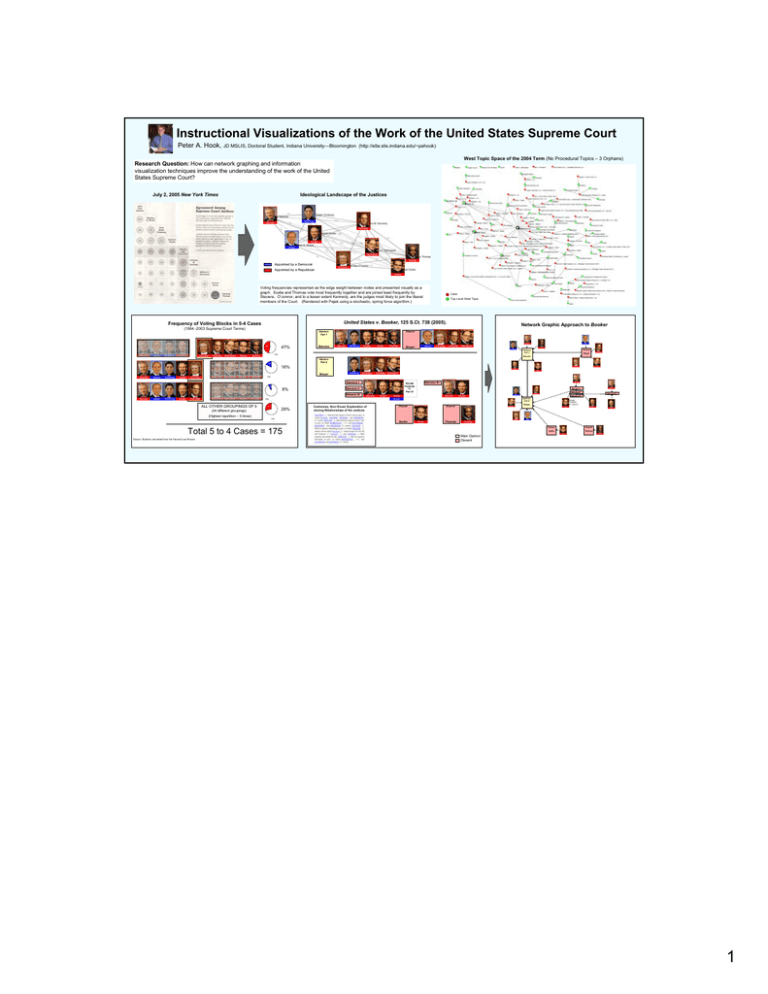
Instructional Visualizations of the Work of the United States Supreme Court Peter A. Hook, JD MSLIS, Doctoral Student, Indiana University—Bloomington (http://ella.slis.indiana.edu/~pahook) West Topic Space of the 2004 Term (No Procedural Topics – 3 Orphans) Research Question: How can network graphing and information visualization techniques improve the understanding of the work of the United States Supreme Court? July 2, 2005 New York Times Ideological Landscape of the Justices Appointed by a Democrat Appointed by a Republican Voting frequencies represented as the edge weight between nodes and presented visually as a graph. Scalia and Thomas vote most frequently together and are joined least frequently by Stevens. O’connor, and to a lesser extent Kennedy, are the judges most likely to join the liberal members of the Court. (Rendered with Pajek using a stochastic, spring force algorithm.) Case Top Level West Topic United States v. Booker, 125 S.Ct. 738 (2005). Frequency of Voting Blocks in 5-4 Cases Network Graphic Approach to Booker (1994 -2003 Supreme Court Terms) 47% 82 Opinion: Part 1 Dissent Stevens Breyer Dissent Opinion: Part 1 175 Breyer Stevens Opinion: Part 2 28 16% Breyer 175 Stevens I 14 8% Stevens II Except Footnote 17, Part IV Stevens III Stevens I Stevens II Stevens IV ALL OTHER GROUPINGS OF 5 51 29% (34 different groupings) Customary, Non-Visual, Explanation of Joining Relationships of the Justices Stevens III Stevens IV Opinion: Part 2 175 Dissent Dissent Scalia Thomas Except Footnote 17, Part IV Breyer (Highest repetition – 3 times) 175 Total 5 to 4 Cases = 175 Source: Statistics harvested from the Harvard Law Review Dissent Dissent Scalia Thomas Main Opinion Dissent 1
